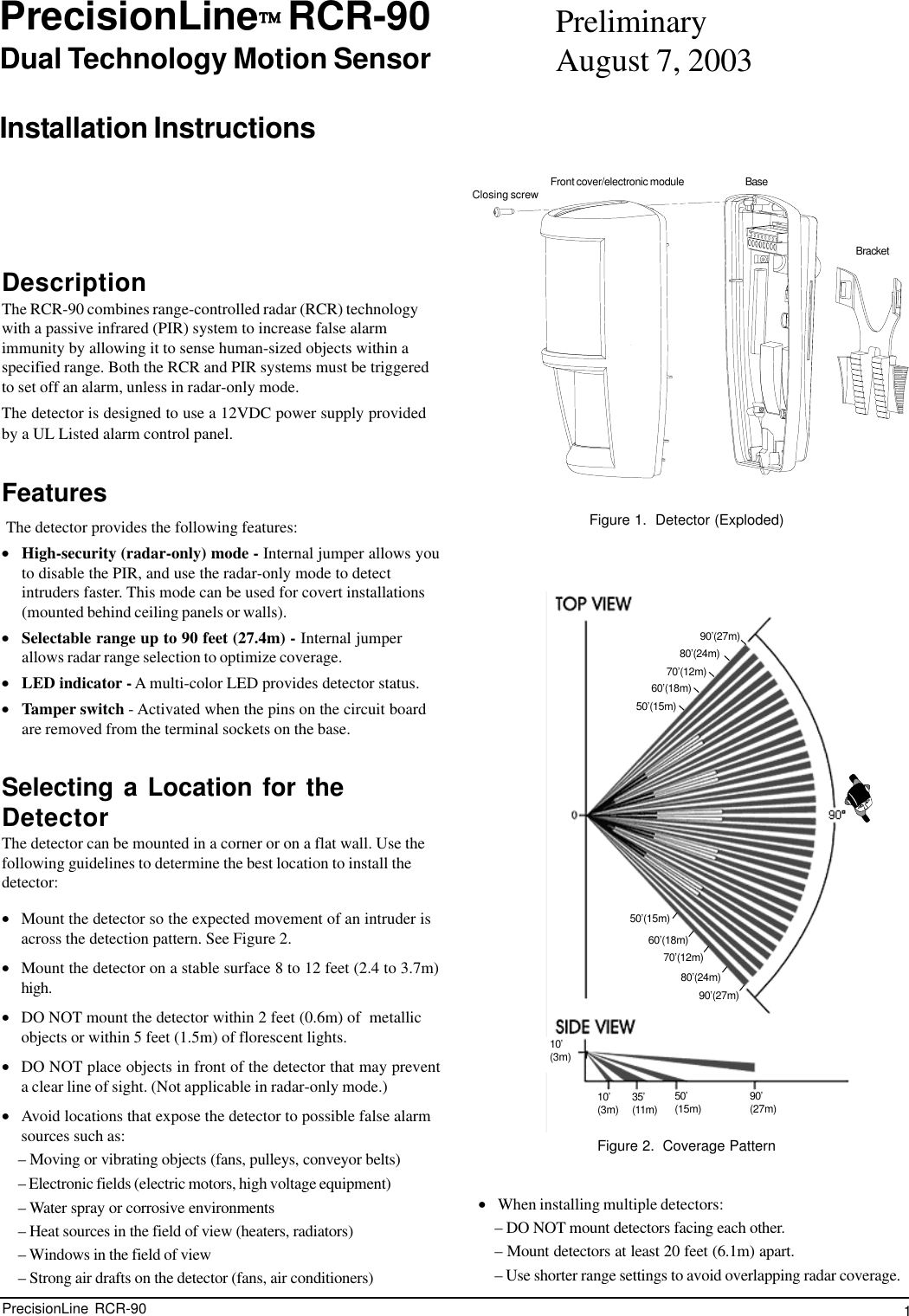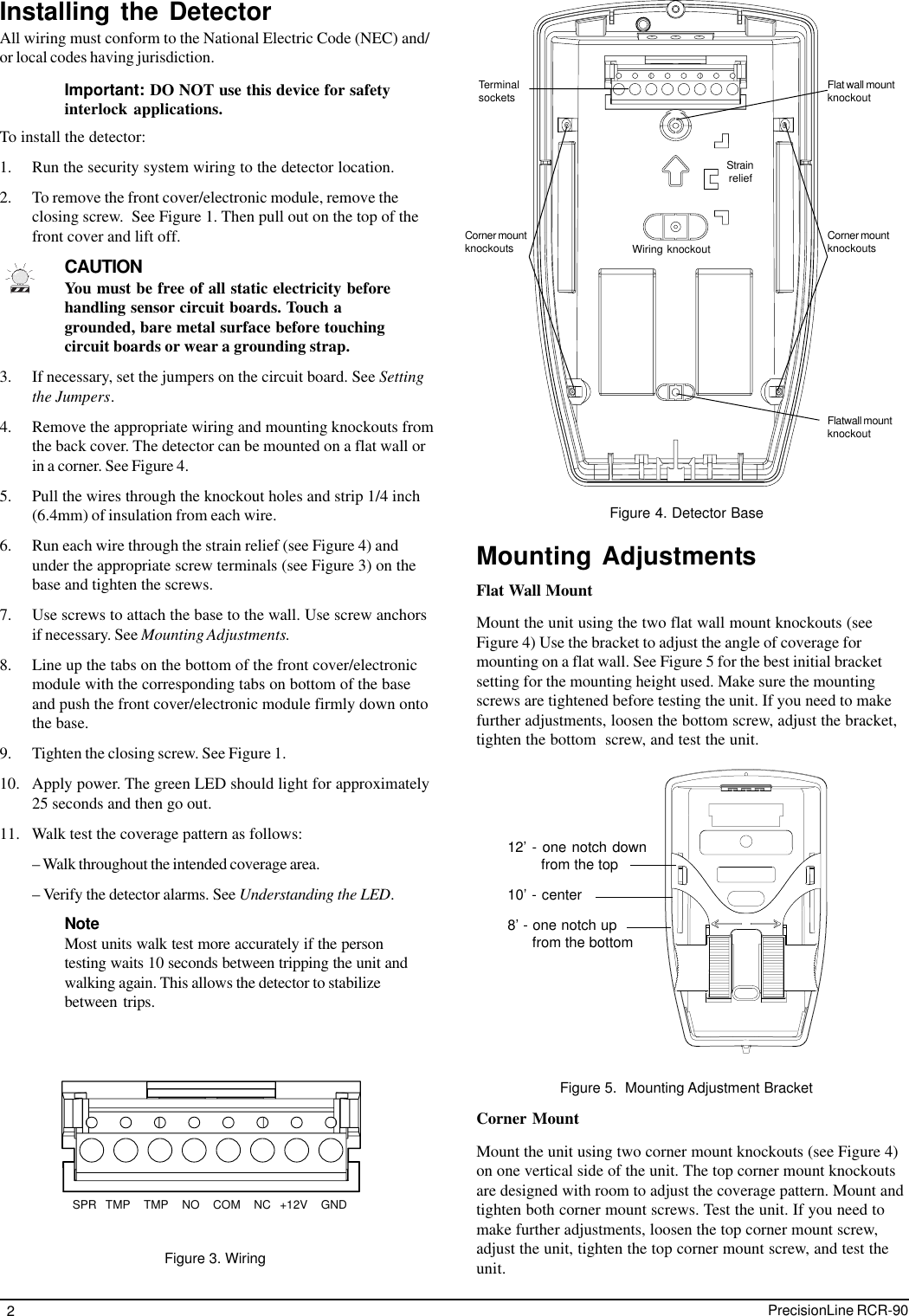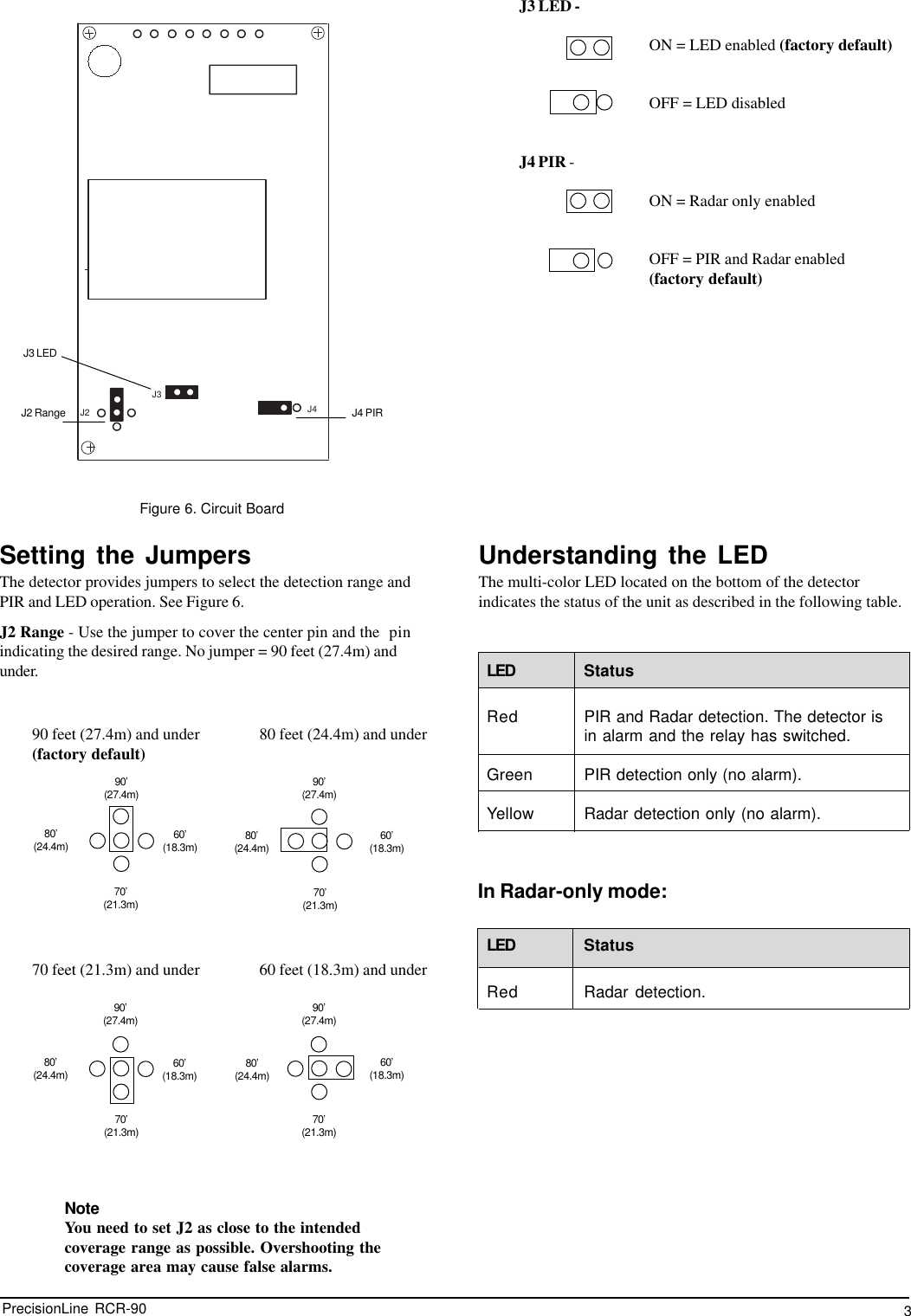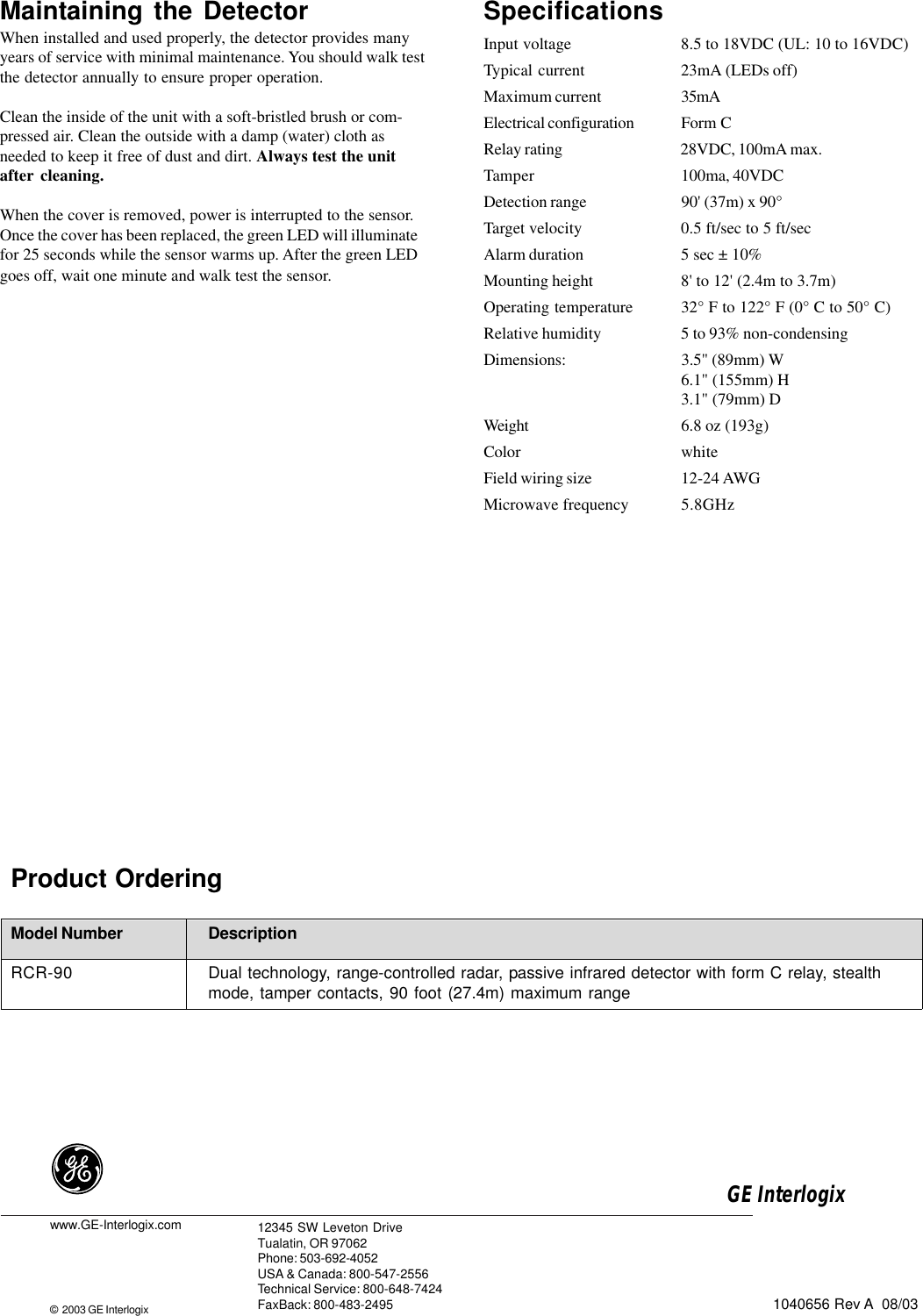UTC Fire and Security AA2 Field disturbance sensor for security systems User Manual 1040656A RCR90 I I P65
UTC Fire & Security B.V. Field disturbance sensor for security systems 1040656A RCR90 I I P65
Contents
- 1. 8
- 2. User Manual
- 3. Users Manual
Users Manual



